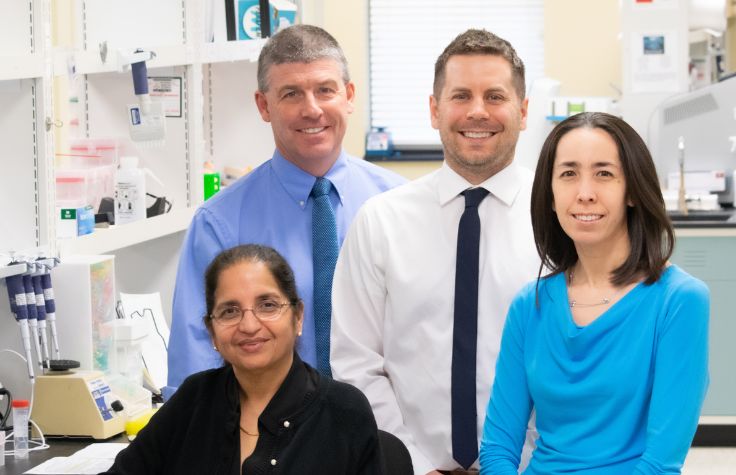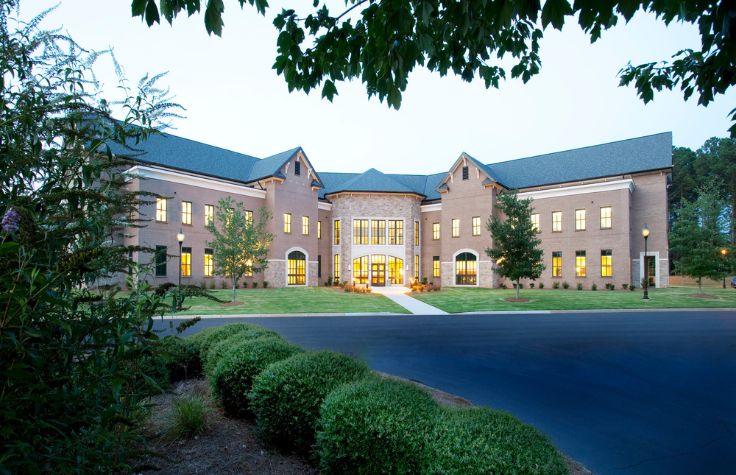
3 November 2022
Before next-generation sequencing (NGS) came along, children and families with rare and undiagnosed genetic diseases often faced years-long diagnostic odysseys. By providing comprehensive, unbiased information, NGS has helped diagnose thousands of people with rare diseases, giving clinicians, patients, and families essential information to move forward.
In South Carolina, the Greenwood Genetic Center helps lead the charge. Founded in 1974, the nonprofit has five locations across the state, providing genetic screening, clinical care, and science education. Along with Greenwood’s care for adults with genetic disorders and cancer, a primary focus is children with rare pediatric disabilities.
Michael Friez, who directs Greenwood’s diagnostic laboratories, has been with the center since 1998, giving him a front-row seat for the genomics revolution. “After graduate school, I came to Greenwood to conduct a clinical molecular fellowship,” he says. “At the time, the center had just purchased its first single-capillary Sanger instrument. We bought our first next-gen sequencer in 2009. Over the years, incorporating these capabilities has been pretty amazing.”
Long-standing collaborations with Illumina
For several years, Greenwood used targeted gene panels. However, because their patients are so genetically diverse, the team adopted whole-exome sequencing (WES, which reads only the gene-coding regions of the genome) in 2014. WES granted them additional clarity in pinpointing the causative variant in a disease. Over the years that followed, whole-genome sequencing (WGS) became more accessible and cost efficient and eventually they had an opportunity to internally test, integrate, and validate the more comprehensive whole genome assay. In 2021, Greenwood took the next step and launched their WGS program.
As new technologies emerged, including data solutions, Greenwood has been among the first to bring them online. The center was an early adopter of artificial intelligence (AI) capabilities that helped accelerate Greenwood’s turnaround times by 75%.
“We’re using an integrated workflow to do all our alignment and secondary analysis. We connect our secondary analysis with AI capabilities, which ultimately helps us prioritize which variants we think are the most relevant for further review,” says Friez. This integrated workflow spanning wet lab to dry lab, including informatics solutions and cloud scalability on AWS, streamlined their operation and set them up for growth.

The methylation puzzle
In recent years, Greenwood has also been working with EpiSign to decipher methylation.
Greenwood began diving into epigenetics more than a decade ago, at first to look for connections between abnormal methylation and autism. In 2019, Greenwood and the London Health Sciences Centre, in London, Ontario, adopted EpiSign technology to analyze methylation patterns and clarify variants of uncertain significance.
“We are the only lab in the US that offers this as a clinical test,” Friez says. “It covers about 130 conditions, and there’s really no sign of slowing down in terms of new signature identification.”
The therapeutic gap
Although genomic technologies answer significant questions for patients and their families, a gap remains in therapy options for rare disease patients. Only a few hundred approved therapies exist for about 8,000 rare diseases. “There’s been a delay in finding viable therapeutics,” says Friez. “Gene therapy and related approaches have not played out at the pace many people hoped for. Once we have a diagnosis, the next task is to ask: ‘What can we do to make their life better? Can we connect them to a clinical trial?’”
This mindset permeates the organization. Despite their many successes, Friez says the team at Greenwood is always thinking about “how can we do more for the patient,” and looking for new possibilities. Friez adds, “The challenges around diagnostics and therapy selection for rare disease patients make us want to keep pushing harder and keep looking for new angles on how we can leverage the technology to answer those unanswered questions.”


